
Tierra del Fuego is an archipelago off the southernmost tip of the South American mainland, across the Strait of Magellan. The archipelago consists of the main island, Isla Grande de Tierra del Fuego, with an area of 48,100 km2 (18,572 sq mi), and a group of many islands, including Cape Horn and Diego Ramírez Islands. Tierra del Fuego is divided between Chile and Argentina, with the latter controlling the eastern half of the main island and the former the western half plus the islands south of Beagle Channel and the southernmost islands. The southernmost extent of the archipelago is just north of latitude 56°S.

The Magallanes Region, officially the Magallanes and Chilean Antarctica Region, is one of Chile's 16 first order administrative divisions. It is the southernmost, largest, and second least populated region of Chile. It comprises four provinces: Última Esperanza, Magallanes, Tierra del Fuego, and Antártica Chilena.

The Strait of Magellan, also called the Straits of Magellan, is a navigable sea route in southern Chile separating mainland South America to the north and Tierra del Fuego to the south. The strait is considered the most important natural passage between the Atlantic and Pacific oceans. It was discovered and first traversed by Europeans by the Spanish expedition of Portuguese explorer Ferdinand Magellan in 1520, after whom it is named. Prior to this, the strait had been navigated by canoe-faring indigenous peoples including the Kawésqar.

Ushuaia is the capital of Tierra del Fuego, Antártida e Islas del Atlántico Sur Province, Argentina, and the southernmost city of the country. With a population of nearly 75,000 and a location below the 54th parallel south latitude, Ushuaia claims the title of world's southernmost city. A much smaller municipality of less than 3,000 people, Puerto Williams in Chile, is nearer to the 55th parallel south, at a latitude of 54°56' S compared to Ushushaia at 54°48' S.

Tierra del Fuego, officially the Province of Tierra del Fuego, Antarctica and South Atlantic Islands, is the southernmost, smallest, and least populous Argentine province.

An apostolic vicariate is a territorial jurisdiction of the Catholic Church under a titular bishop centered in missionary regions and countries where dioceses or parishes have not yet been established. It is essentially provisional, though it may last for a century or more. The hope is that the region will generate sufficient numbers of Catholics for the Church to create a diocese. In turn, the status of apostolic vicariate is often a promotion for a former apostolic prefecture, while either may have started out as a mission sui iuris.

Isla Grande de Tierra del Fuego also formerly Isla de Xátiva is an island near the southern tip of South America from which it is separated by the Strait of Magellan. The western portion (61.4%) of the island is in Chile, while the eastern portion is in Argentina. It forms the major landmass in an extended group of islands or archipelago also known as Tierra del Fuego.
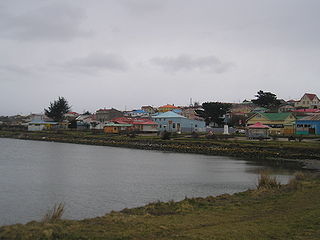
Tierra del Fuego Province is one of four provinces in the southern Chilean region of Magallanes and Antártica Chilena (XII). It includes the Chilean or western part of the main island of Tierra del Fuego, except for the part south of the Cordillera Darwin, which is in Antártica Chilena Province.
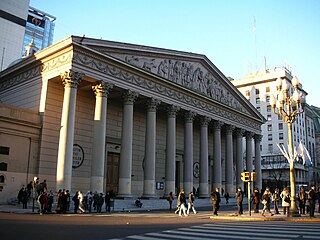
The Archdiocese of Buenos Aires is one of thirteen Latin Metropolitan archdioceses of the Catholic Church in Argentina, South America.

The Roman Catholic Diocese of Punta Arenas is a suffragan diocese of the Archdiocese of Puerto Montt, in Chile. Its current bishop is Mgr. Bernardo Bastres Florence, S.D.B.
The region of the Beagle Channel, explored by Robert FitzRoy in the 1830s, was one of the last to be colonized by Chile and Argentina. The cold weather, the long distances from other inhabited regions, and the shortage of transport and subsistence, kept it far from the governmental task.
The Roman Catholic Diocese of Changde is a suffragan Latin diocese in the Ecclesiastical province of Changsha, in Central China, yet depends on the missionary Roman Congregation for the Evangelization of Peoples.

Tierra del Fuego National Park is a national park on the Argentine part of the island of Tierra del Fuego, within Tierra del Fuego Province in the ecoregion of Patagonic Forest and Altos Andes, a part of the subantarctic forest. Established on 15 October 1960 under the Law 15.554 and expanded in 1966, it was the first shoreline national park to be established in Argentina.

Between 1883 and 1906 Tierra del Fuego experienced a gold rush attracting many Chileans, Argentines and Europeans to the archipelago, including many Dalmatians. The gold rush led to the formation of the first towns in the archipelago and fueled economic growth in Punta Arenas. After the gold rush was over, most gold miners left the archipelago, while the remaining settlers engaged in sheep farming and fishing. Indigenous Selk'nam populations declined sharply during the rush.
Mateo Martinić Beroš is a Chilean historian, politician and lawyer. He has primarily dealt with the history of Magallanes Region. He entered the University of Chile in 1953 studying briefly pedagogy before moving on to study law and then continued his law studies in the Catholic University of Chile. He finally became a lawyer in 1983. From 1964 to 1970 he served as intendant of Magallanes Region. He received the National History Award in 2000.
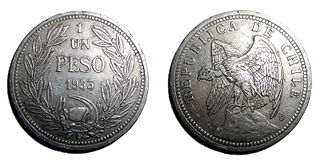
In late 19th and early 20th centuries, sheep farming expanded across the Patagonian grasslands making the southern regions of Argentina and Chile one of the world's foremost sheep farming areas. The sheep farming boom attracted thousands of immigrants from Chiloé and Europe to southern Patagonia. Early sheep farming in Patagonia was oriented towards wool production but changed over time with the development of industrial refrigerators towards meat export. Besides altering the demographic and economic outlook of Southern Patagonia the sheep farming boom also changed the steppe ecosystem.
Tobífera Formation is a volcano-sedimentary formation of Middle to Late Jurassic age. The formation is crops out in the Magallanes Region in southern Patagonia and Tierra del Fuego of Chile, the Santa Cruz Province of southern Argentina, and in the subsurface of the Malvinas Basin offshore Argentina and the Falkland Islands.
The Apostolic Vicariate of Northern Patagonia was a short-lived (1884-1904) pre-diocesan Latin Rite Catholic jurisdiction in Patagonia, southern Argentina.
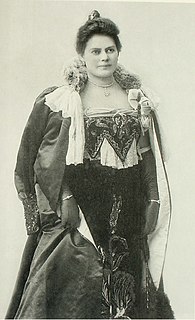
Sara Braun was a Latvian-born Chilean businesswoman who became one of the principal employers in Patagonia. After emigrating with her family from the Russian Empire to escape persecution because of their Jewish heritage, the family toured Europe and then looked for work in Argentina and Paraguay, before moving to Magallanes, now known as Punta Arenas, in 1874.
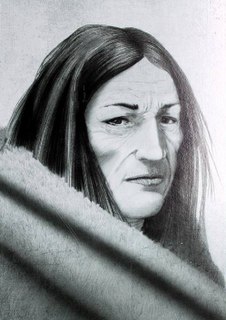
María, better known as María la Grande or María Grande, is the Christian name of a woman who served as the cacica of the southern Tehuelche people who lived in the Strait of Magellan and the Patagonian coast during the first half of the 19th century. Her direct domain was focused in the territory of the Bay of San Gregorio, in the present-day Chilean region of Magallanes, although she was called upon in other Patagonian regions when a conflictive situation required her judgment.














